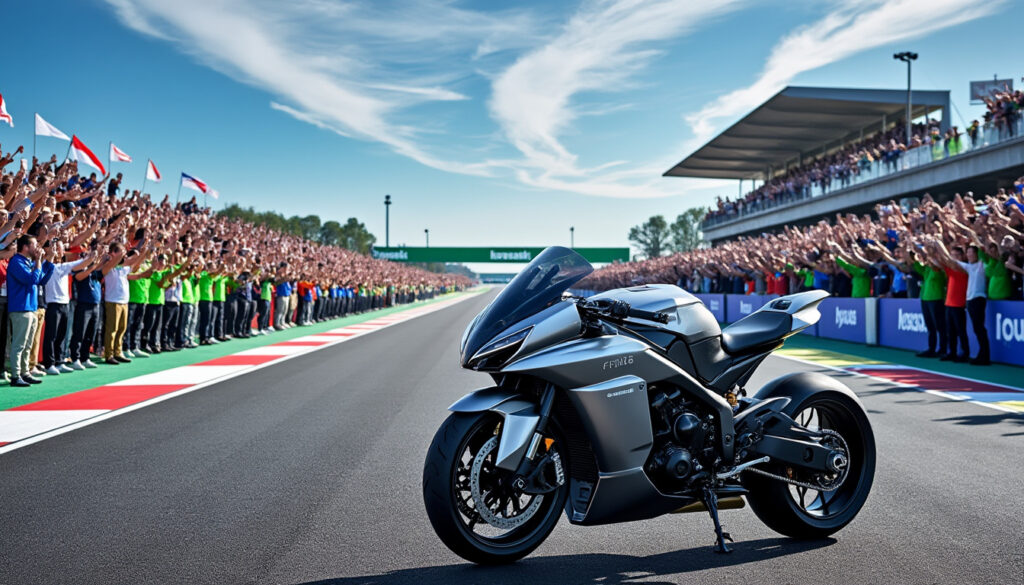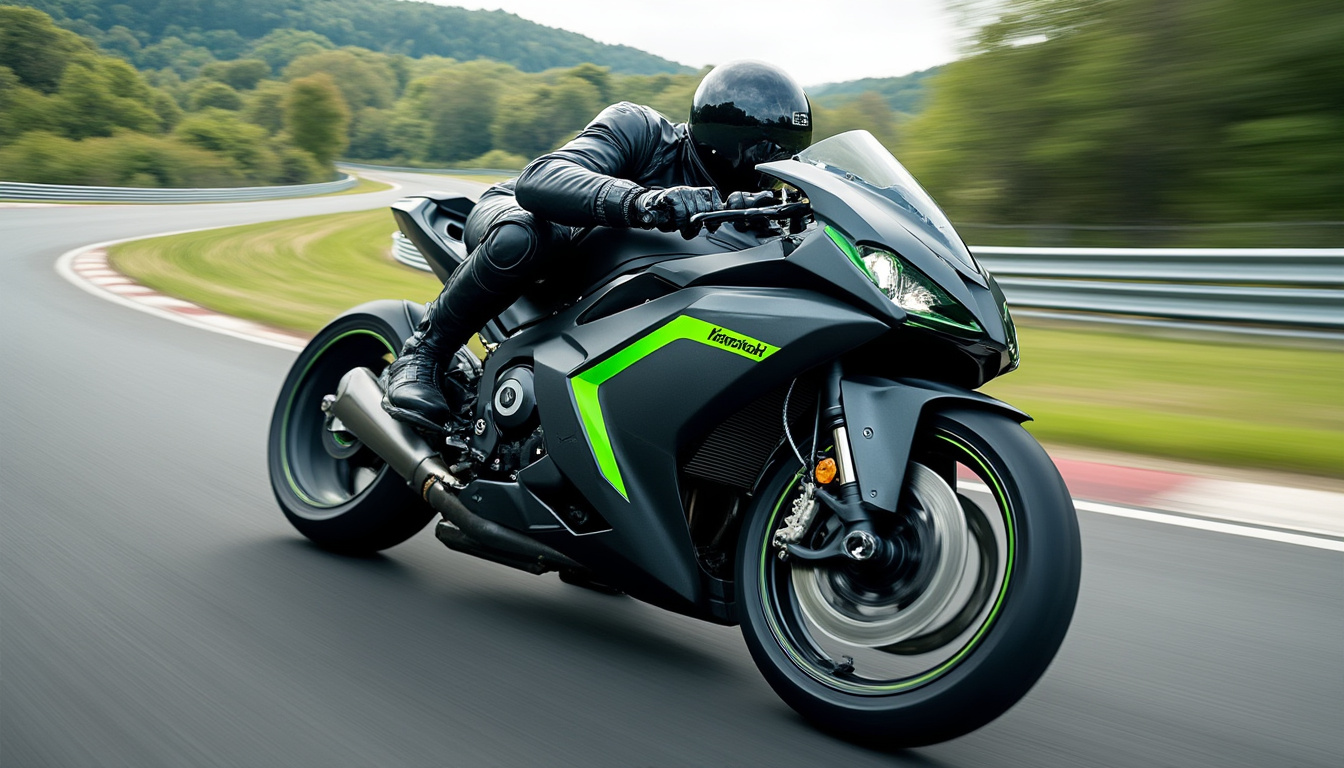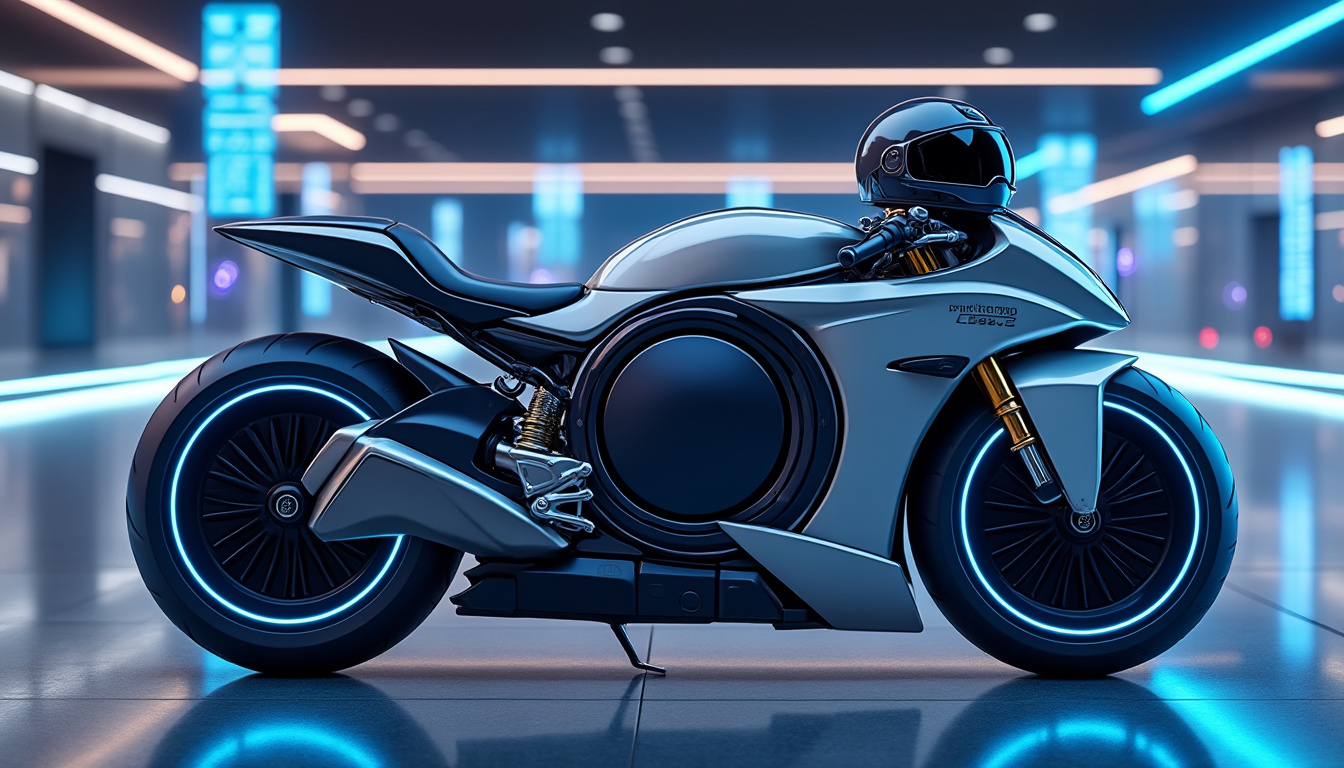the hydrogen motorcycle from Kawasaki causes a stir in Le Mans

The first public demonstration of Kawasaki's hydrogen motorcycle prototype, the Ninja H2 HySE, captivated the audience at the 24 Hours of Le Mans. Spectators were able to discover this innovation with aggressive lines while experiencing environmentally friendly performance. This iconic model could redefine the standards of two-wheel mobility in the coming years.
As the transition to cleaner engines takes center stage in discussions about modern automobiles, Kawasaki is not content to be a mere observer. By integrating hydrogen into its offerings, the Japanese manufacturer is engaged in an ambitious approach that blends a passion for motorcycles with a concern for the environment. Through this initiative, Kawasaki hopes not only to appeal to thrill-seekers but also to promote a sustainable vision of mobility.
- Ninja H2 HySE prototype
- Performance and environmental respect
- Innovation in the motorcycling sector
The hydrogen revolution: context and development of the technology
Kawasaki has decided to explore the potential of hydrogen technology to meet demands for modernity and sustainability. In 2025, collective awareness around ecological issues is stronger than ever, and every player in the two-wheeled sector must adapt quickly to remain relevant. The history of Kawasaki's efforts in this field, notably with the Hydrogen Small mobility & Engine technology (HySE) project that brings together several Japanese manufacturers, embodies a commitment to advancing toward a sustainable mobility.
The development of hydrogen engines aims to reduce greenhouse gas emissions while preserving the pleasure of riding high-performance motorcycles. The Ninja H2 HySE prototype, based on the Ninja H2 SX, represents this significant advancement. It can not only reach impressive speeds but also emits only water as its main exhaust product, thus transforming the perception of mobility on two wheels.
The technical characteristics of the prototype and its innovations
The heart of the Kawasaki Ninja H2 HySE is a 998 cm³ inline four-cylinder engine, specially optimized to run on hydrogen. This engine relies on several innovations:
- Unique injection system: The system has been designed to ensure effective combustion of hydrogen, enabling performance levels comparable to traditional engines.
- Hydrogen tanks: Integrated into the rear of the motorcycle, these tanks have been modified to store gaseous hydrogen under high pressure, maximizing range.
- Intelligent acceleration technology: This technology allows for rapid engine response, aiming to keep the rider immersed in the riding experience.
These features promise not only a performance equivalent to that of thermal engines, but also a ride free from the classic noise nuisances of motorcycles. What could be better for a speed and cornering enthusiast than to combine the thrill of riding with environmental awareness?
| Characteristic | Details |
|---|---|
| Engine | Inline four-cylinder, 998 cm³ |
| Tanks | Gaseous hydrogen under high pressure |
| Emission | Mainly water |
| Acceleration technology | Intelligent, responsive |

A striking demonstration at Le Mans
On April 19, 2025, the Kawasaki Ninja H2 HySE completed its first public demonstration lap on the Bugatti Circuit during the 24 Hours of Motorcycles. This highly anticipated moment was marked by the presence of over 70,000 spectators, eager to applaud this ecological advancement. German rider Matthias Höppner took the reins of this initial demonstration, despite challenging weather conditions.
The challenges encountered during the demonstration
The traffic conditions during the event particularly tested the motorcycle's capabilities. Höppner noted that the most challenging aspect was not only managing the weather but also the need to focus on the trajectories while riding an innovative machine. Despite these challenges, he remained convinced that the experience was enriching:
“It really wasn't easy, but that lap was way too short!... It was so delicate that I focused on riding the motorcycle, on the trajectories, on the track. I didn't even see the spectators in the stands. The motorcycle's behavior was good.”
- Difficult weather conditions
- More than 70,000 spectators present
- Kawasaki's passion and commitment
The future of hydrogen motorcycles: stakes and perspectives
This demonstration at Le Mans marks a crucial step for Kawasaki in the development of hydrogen motorcycles. In addition to raising questions about the future of this technology, it also brings forth numerous challenges. The deployment of hydrogen as a viable energy source requires adaptation both at the infrastructure and legislative levels.
The reliability of hydrogen supply for the general public must be ensured. Establishing refueling stations for hydrogen motorcycles remains a key objective. Industry players must collaborate to make this solution accessible to all. Networking information and creating dedicated platforms will help accelerate this transition.
Perspectives for users and manufacturers
For users, the emergence of hydrogen motorcycles could offer optimal performance while minimizing their carbon footprint. The stakes for manufacturers like Kawasaki are therefore significant:
- Research and development: Invest in new technologies to enhance the feasibility of hydrogen fuel production.
- Education and awareness: Educate users about the benefits of hydrogen and zero-emission vehicles.
- Industry collaboration: Work collectively with other industry players to establish adapted standards and infrastructures.
| Challenges | Actions to consider |
|---|---|
| Access to hydrogen | Development of a network of stations |
| Public acceptance | Information and education campaigns |
| Collaboration among stakeholders | Strategic partnerships |

The Kawasaki Ninja H2 HySE: innovation serving sustainability
With the Ninja H2 HySE, Kawasaki embodies the unwavering spirit of innovation that has made its reputation. Paving the way for the future of two-wheel mobility by integrating hydrogen solutions is a bold yet necessary gamble. The adoption of this technology could propel the motorcycle industry towards more than just a matter of speed and enjoyment, but rather towards a perspective of sustainability.
With a world compelled to rethink its energy consumption patterns, industry leaders like Kawasaki must commit to an environmentally friendly future while preserving the sensations that motorcycles like the Ninja H2 HySE can offer. This dynamic is not only positive for brand image but also for the future of motorcyclists. In this light, Kawasaki's long-term commitment could well make this innovation a model to follow for other stakeholders.
Source: www.lerepairedesmotards.com
Leave a Reply


Articles relatifs